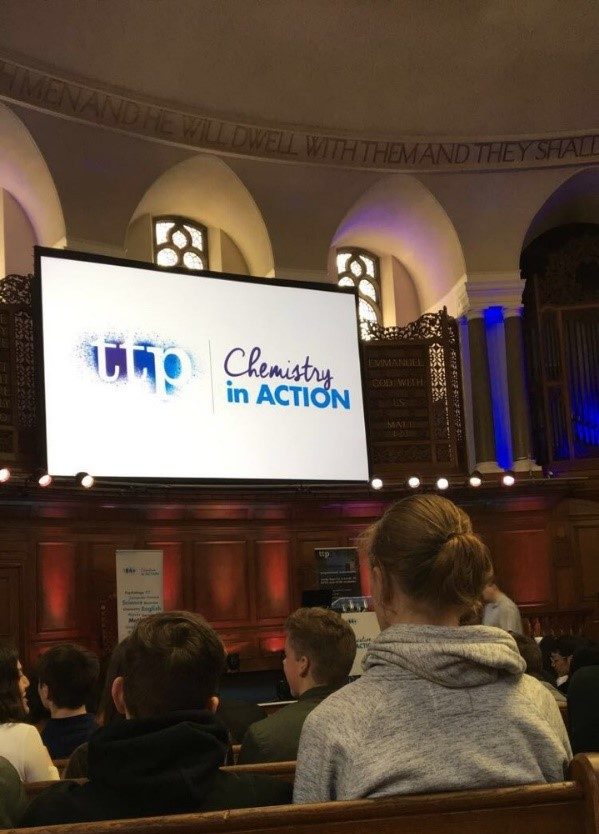Chemistry in Action Trip
On Tuesday the 5th of March, a group of Year 12 chemists travelled into Central London to attend the Chemistry in Action day held at the Emmanuel Centre.

The day was filled with intriguing and entertaining lectures on a variety of topics all focused on chemistry. Ranging from learning how to discover an element and the life of a chemical engineer to how to discover aliens with the help of chemical computing and why plastic may not be so fantastic, the whole day gave us the opportunity to expand our learning outside the classroom and discover weird and wonderful things about how the world has developed thanks to chemistry and where it could be in the future.
The day kicked off with a talk on “How to discover an element” by Kit Chapman. We learned that “super heavy elements” (elements with more than 92 protons) are incredibly unstable, which is why they only exist in their natural state in space and in other parts of the universe – but not on earth. He described the difference between fusion and fission. In order to demonstrate the process of fusion, Kit Chapman invited volunteers to throw marshmallows at him. If any marshmallows got into his mouth, this represented fusion. The demonstration was our highlight of the day: an unorthodox, but very entertaining way of explaining chemistry!

The second talk was about a life in chemical engineering by chemical engineer, Yasmin Ali. She explained the different career options out there for people interested in chemical engineering, such as job prospects in cosmetic companies, food manufacturing, the health and safety sector, drug delivery and, of course, the energy sector. It was fascinating to hear about the diverse nature of her life in chemical engineering, especially the opportunity to travel and work in other countries.
After a short break, we had a talk about how to discover aliens and how to make chemical computers by Professor Lee Cronin. Prof. Cronin is the founder of all the research done into making chemical computers and it was particularly fascinating to hear about his progress into this project. A “chemical computer” consists of, essentially, a BZ reaction on a larger scale. A BZ reaction is where a solution turns from red to blue and back again through continuous stirring. Perhaps most importantly, we managed to secure one of our chemistry lessons carrying out the BZ reaction!
After a lunch break, we got down to the nitty gritty of silly mistakes made by A level students in their chemistry exams, and how to avoid them – a talk delivered by an AQA Marker! The most important thing to take away is to RTFQ! Which stands for: Read The FULL Question!
Dr Jamie Gallagher explained the history of materials and his strong (and slightly questionable) hatred towards Lego characters, based on their unrelenting optimism, sinister looks (“just look at the deadness behind their eyes!”), indestructibility and obviously the fact that Legos are natural enemies of the foot. And he shared a life skill: to destroy Lego, simply put them in a glass of nail polish and watch as they disintegrate! He also explained the prominent problem of plastic today through a Kahoot! quiz.

Every chemist has a favourite element, and our final talk was focused on mercury. We learned that mercury amalgamates gold to form an amalgam. To get pure gold, this amalgam is heated and releases mercury vapour into the surrounding environment. Mercury vapour is toxic, and this process is usually carried out in some developing countries, which gives children neurological defects. So next time you wear a piece of gold jewellery, think about where it is from.
Overall, we found the day to be an educational insight into where chemistry could take us in the future and gave us a better idea of the subject outside the classroom.
Zahra Abbas and Sarina Sanghera, Year 12